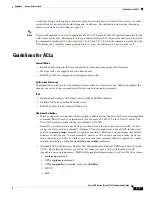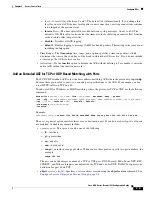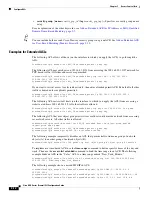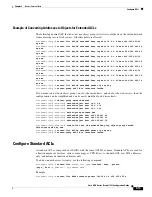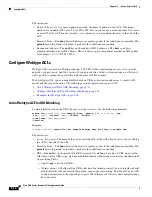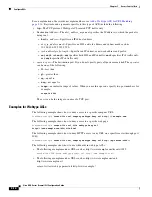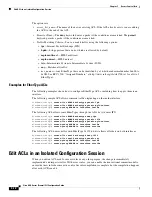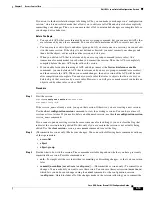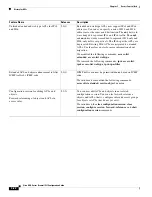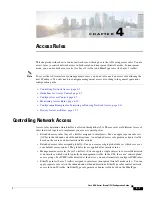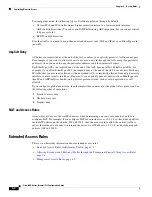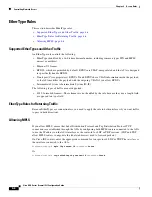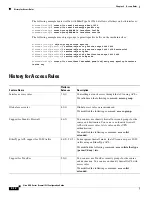
3-19
Cisco ASA Series Firewall CLI Configuration Guide
Chapter 3 Access Control Lists
Edit ACLs in an Isolated Configuration Session
If you want to further isolate the impact of editing ACLs, you can make your changes in a “configuration
session,” which is an isolated mode that allows you to edit several ACEs and objects before explicitly
committing your changes. Thus, you can ensure that all of your intended changes are complete before
you change device behavior.
Before You Begin
•
You can edit ACLs that are referenced by an access-group command, but you cannot edit ACLs that
are referenced by any other command. You can also edit unreferenced ACLs or create new ones.
•
You can create or edit objects and object groups, but if you create one in a session, you cannot edit
it in the same session. If the object is not defined as desired, you must commit your changes and
then edit the object, or discard the entire session and start over.
•
When you edit an ACL that is referenced by an access-group command (access rules), the
transactional commit model is used when you commit the session. Thus, the ACL is completely
compiled before the new ACL replaces the old version.
•
If you enable forward referencing of ACL and object names (the
forward-reference enable
command), you can delete an ACL that is referenced by an access-group command (access rules),
and then recreate the ACL. When you commit changes, the new version of the ACL will be used
after compilation is complete. You can also create rules that refer to objects that do not exist, or
delete objects that are in use by access rules. However, you will get a commit error if you delete an
object used by other rules, such as NAT.
Procedure
Step 1
Start the session.
hostname#
configure session
session_name
hostname(config-s)#
If the
session_name
already exists, you open that session. Otherwise, you are creating a new session.
Use the
show configuration session
command to view the existing sessions. You can have at most 3
sessions active at a time. If you need to delete an old unused session, use the
clear configuration session
session_name
command.
If you cannot open an existing session because someone else is editing it, you can clear the flag that
indicates the session is being edited. Do this only if you are certain the session is not actually being
edited. Use the
clear session
session_name
access
command to reset the flag.
Step 2
(Uncommitted sessions only.) Make your changes. You can use the following basic commands with any
of their parameters:
•
access-list
•
object
•
object-group
Step 3
Decide what to do with the session. The commands available depend on whether you have previously
committed the session. Possible commands are:
•
exit
—To simply exit the session without committing or discarding changes, so that you can return
later.
•
commit
[
noconfirm
[
revert-save
|
config-save
]]—(Uncommitted sessions only.) To commit your
changes. You are asked if you want to save the session. You can save the revert session (
revert-save
),
which lets you undo your changes using the
revert
command, or the configuration session
(
config-save
), which includes all of the changes made in the session (allowing you to commit the
Summary of Contents for ASA 5508-X
Page 11: ...P A R T 1 Access Control ...
Page 12: ......
Page 157: ...P A R T 2 Network Address Translation ...
Page 158: ......
Page 233: ...P A R T 3 Service Policies and Application Inspection ...
Page 234: ......
Page 379: ...P A R T 4 Connection Management and Threat Detection ...
Page 380: ......

